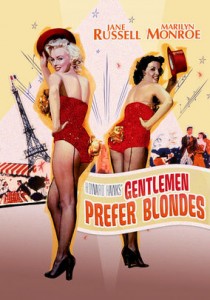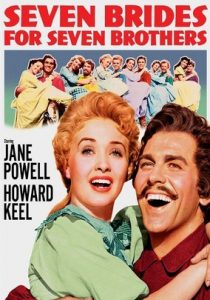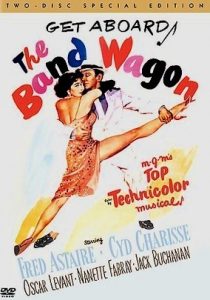Gentlemen Prefer Blondes-1953
Director Howard Hawks
Starring Jane Russell, Marilyn Monroe
Top 250 Films #164
Scott’s Review #384
Reviewed March 13, 2016
Grade: B+
One of the iconic and legendary stars, Marilyn Monroe’s better-known offerings from her brief career are Gentlemen Prefer Blondes (1953), a fun musical romantic comedy.
To create this wonderful gem, she stars alongside Jane Russell, another popular Hollywood star from a golden era.
Together, they have great chemistry and an easy yin-yang relationship, which makes the film light and cheerful but not meaningless or too fluffy.
It is just a genre that it is.
As mentioned, Roma has evolved in modern cinema, and Gentlemen embodies the innocence that has since been lost. The 1950s were a perfect time for this genre of film.
Lorelei Lee (Monroe) and Dorothy Shaw (Russell) are American showgirls and best friends who perform a stage show together. Lorelei loves diamonds and rich men- she is dating Gus Esmond, an awkward yet lovable young man who is wealthy but controlled by his father.
Dorothy is less interested in being showered with wealth but prefers handsome, adventure-filled adventures. These begin when the girls board a cruise ship to Paris. A private investigator (Malone) hired by Gus’s father observes and follows Lorelei while the Olympic swim team pursues Dorothy.
The film is entertaining and a must-see for all Monroe fans, as it was at the time when she was at her best- Gentlemen Prefer Blondes and Some Like it Hot are my personal favorites, and she was in the prime of her tragically short film career- sure, she plays the “dumb blonde” character with gusto. Still, there is something innocent and fun about her portrayal of Lorelei, and we immediately fall in love with her.
Dorothy is the leader—the smart one—and complements Lorelei’s naivety. More worldly and sophisticated, she watches out for her counterpart.
The chemistry between Monroe and Russell makes the film work so well. The audience buys them as best friends, and the two actresses (who reportedly got along famously).
Monroe shines during the legendary number, Girls’ Nights Are the Best Friend,” a performance that famously inspired the 1984 Madonna video, ” Girls Night Out,” which will forever live on in music history.
My favorite scene is on the ship when Lorelei gets into trouble. She sneaks into the private investigator’s cabin to obtain incriminating evidence and gets stuck in the tight cabin window.
The shot of Monroe sticking halfway out the window is funny. She then hilariously enlists a young child to help her avoid recognition and a subpar man with subpar vision.
Vision also comes into play when Dorothy disguises herself as Lorelei in a silly fashion (looking more like a drag queen) in a courtroom scene over hi-jinks involving a stolen tiara.
Interesting is the scene in wsurroundedrothy is surrounded by dancing, which is as provocative for 1953 as it is today.
Undoubtedly unable to show any form of nudity whatsoever, the dancers are clad in nude-colored shorts, which indeed suggests elements of sexuality, an illusion of nudity, and fits the scene perfectly as Dorothy is in testosterone heaven. It is like a big, giant fantasy for her.
Gentlemen Prefer Blondes (1953) is a triumphant offering from another cinematic era—a sorely missed time. Cute but not trivial, the film is a witty portrayal of the iconic Marilyn Monroe.


